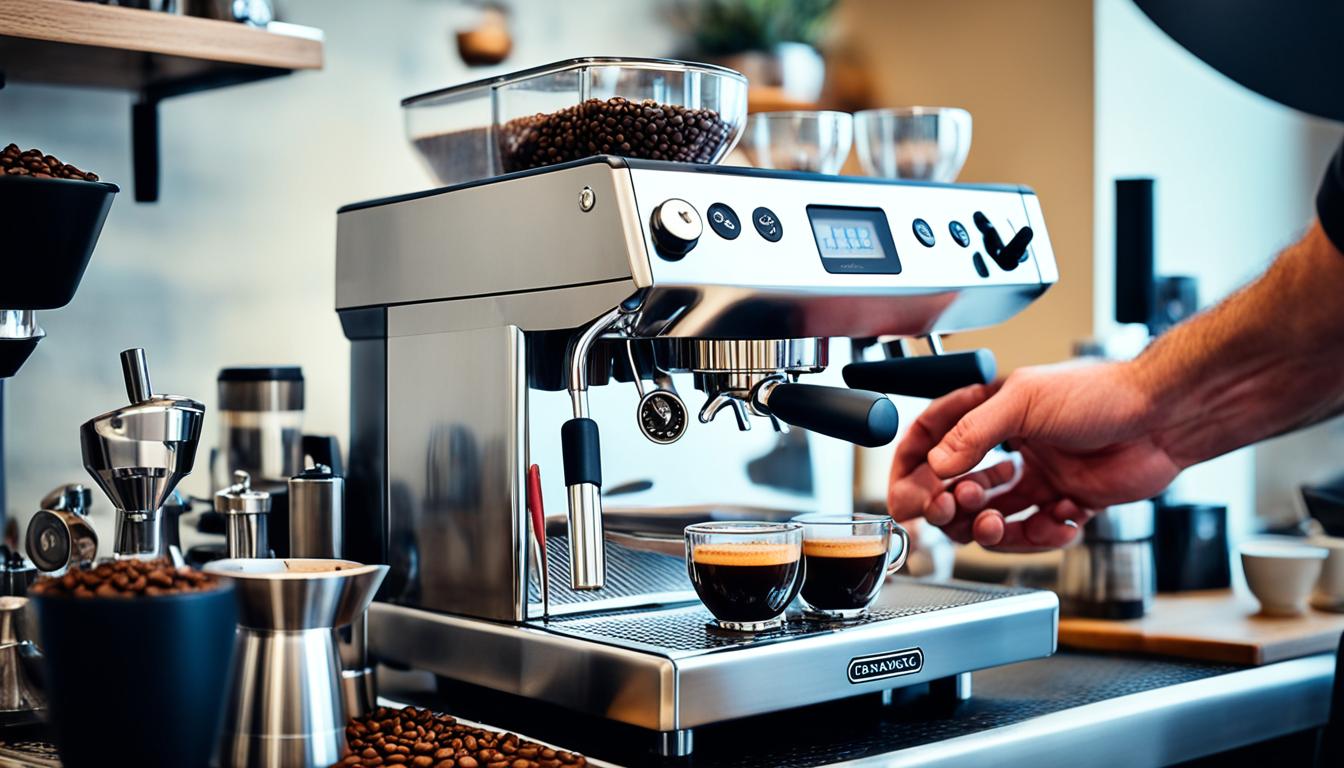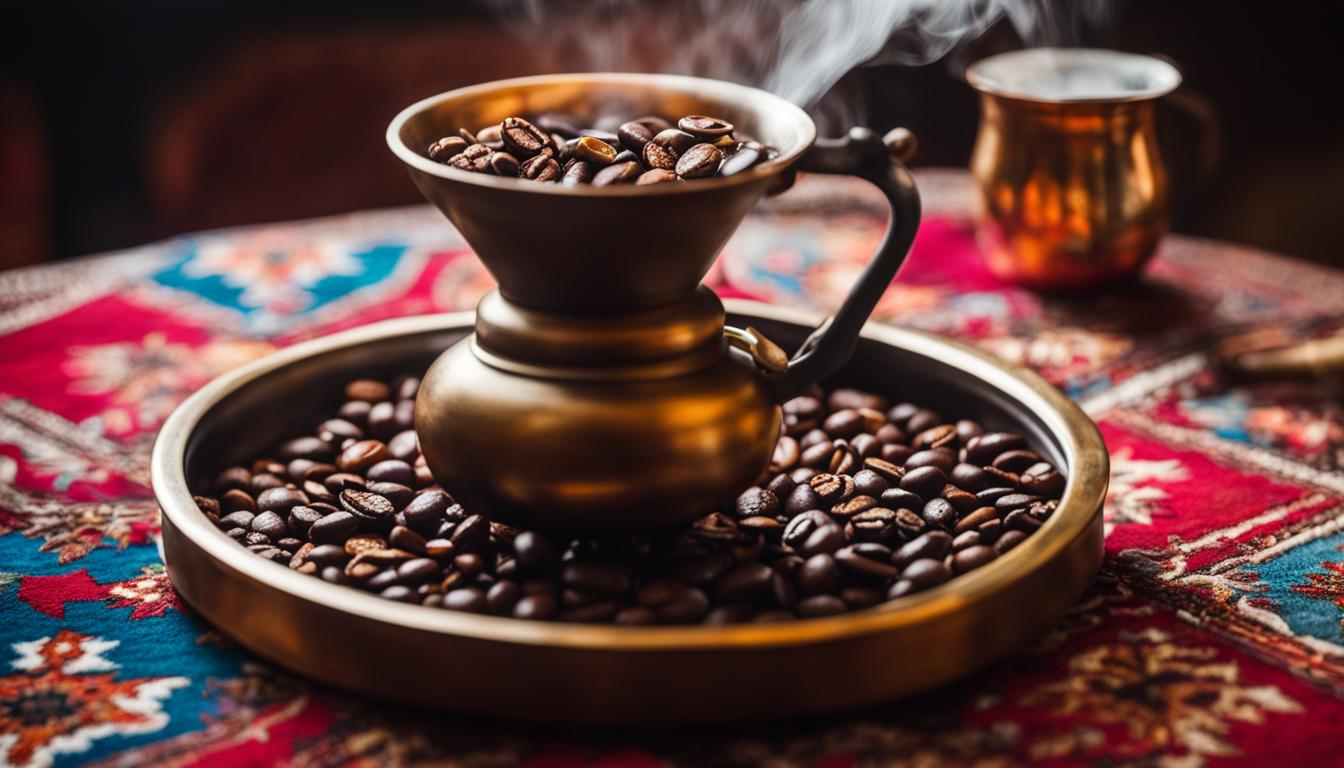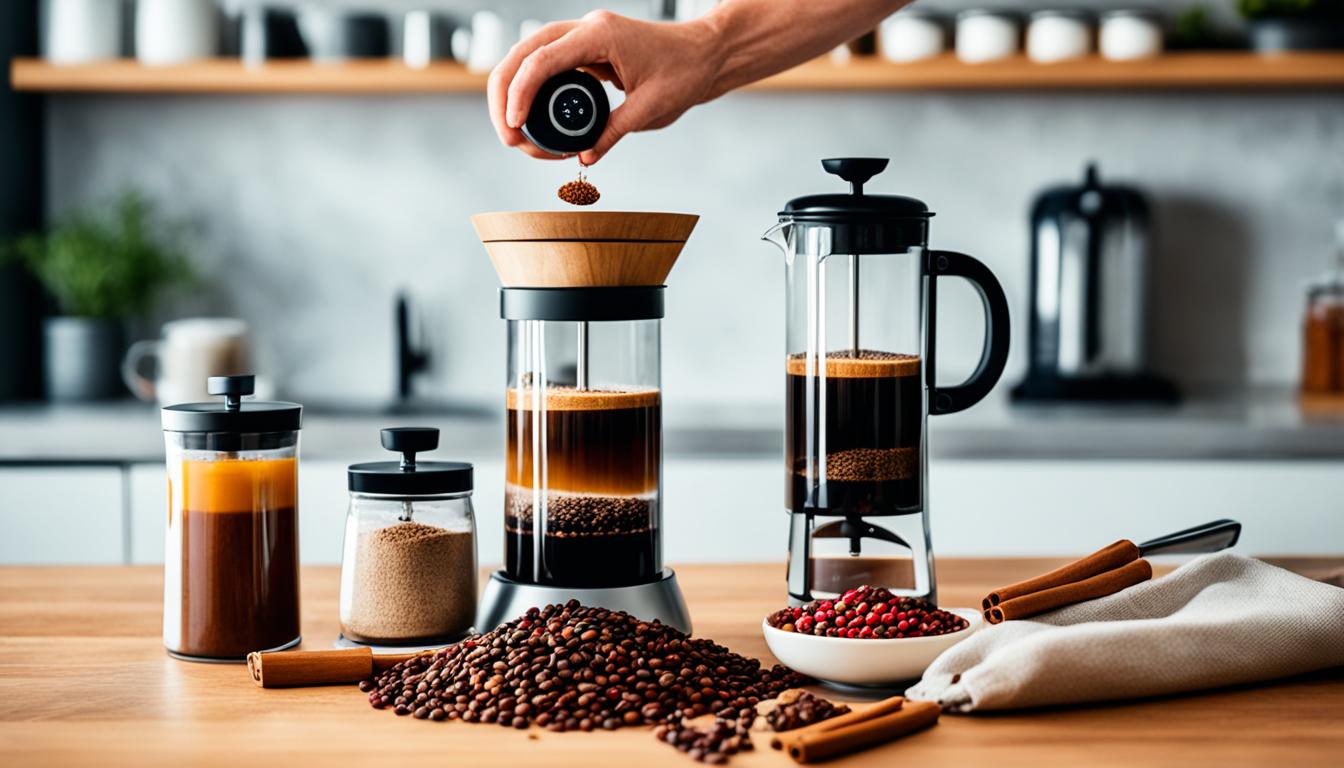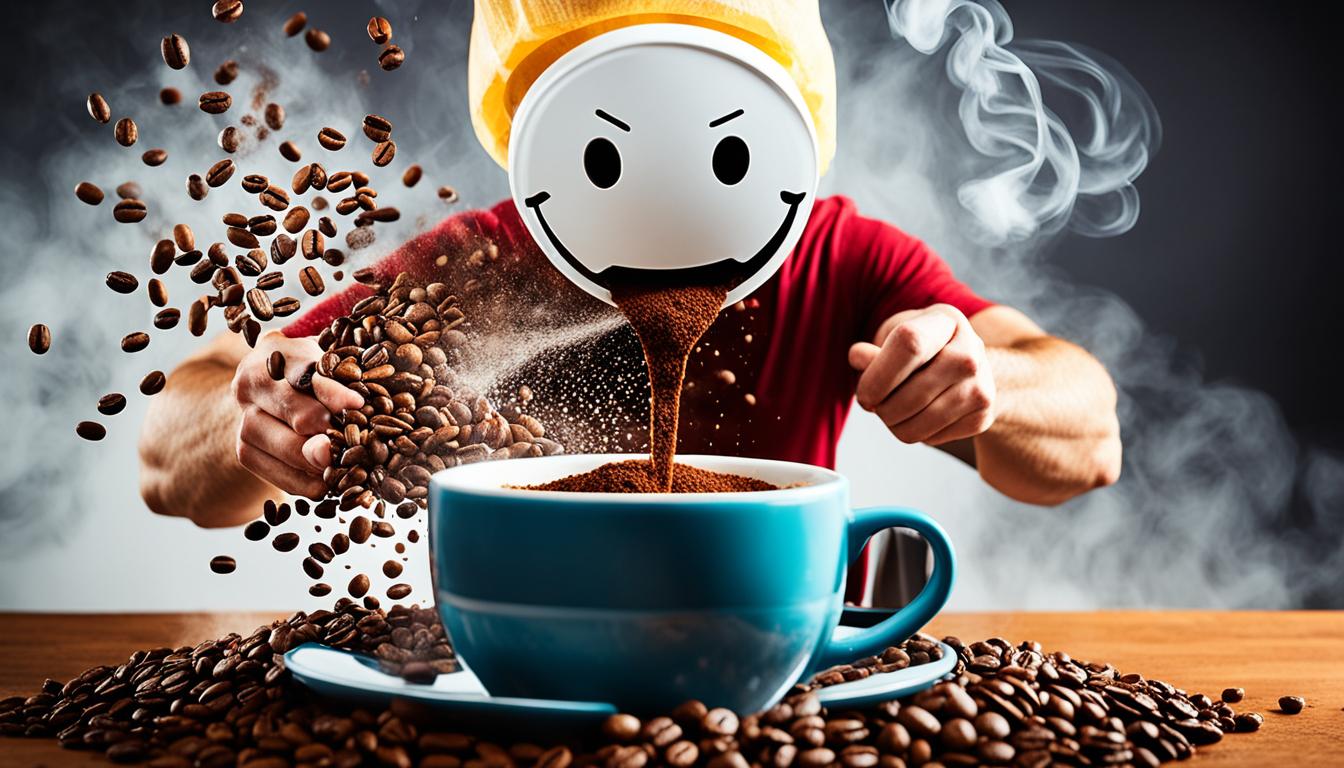If you’re passionate about coffee and want to take your home-brewed barista skills to the next level, it’s time to master advanced espresso techniques. With our expert tips and guidance, you’ll be able to elevate your espresso game and enjoy the satisfaction of brewing a perfect cup of coffee right in your own kitchen.
- Understanding the science behind espresso brewing is crucial for achieving the perfect cup.
- Mastering the basics, such as machine setup, coffee selection, grinding, and tamping, is essential.
- Fine-tuning your technique by experimenting with shot lengths and monitoring the extraction process will help you achieve the desired flavor profile.
- Using high-quality coffee beans and fresh ingredients is key to achieving exceptional taste and aroma.
- Practicing and paying attention to every detail will help you elevate your barista skills and enjoy professional-level coffee at home.
The Science Behind Espresso Brewing
Brewing espresso is like conducting a fascinating science experiment. Every element involved in the process contributes to the final taste of the espresso. Factors such as coffee quality, water temperature, extraction time, pressure, and grind size all play vital roles in creating the perfect espresso shot.
First and foremost, the quality of the coffee beans you choose greatly impacts the flavor of your espresso. Opt for high-quality beans that have been expertly roasted to bring out the best flavors.
The temperature of the water used for brewing is critical. Water that is too hot can result in a bitter and over-extracted espresso, while water that is too cold leads to under-extraction and a weak flavor profile. Maintaining the ideal water temperature is key to achieving a balanced and flavorful espresso shot.
Next, the duration of the extraction process determines the strength and flavor intensity of the espresso. Timing the extraction ensures that you achieve the desired balance between acidity, bitterness, and sweetness in your shot.
The amount of pressure applied during the brewing process also affects the final outcome. The right amount of pressure extracts the flavors from the coffee grounds, resulting in a rich and full-bodied espresso.
Lastly, the size of the coffee grounds, known as the grind size, is an essential factor. Different brewing methods require different grind sizes, and for espresso, a finely ground coffee is necessary to achieve optimal extraction and a flavorful shot.
To summarize, brewing espresso is a delicate balance of science and art. By carefully considering and controlling variables such as coffee quality, water temperature, extraction time, pressure, and grind size, you can create a truly exceptional espresso shot that delights the senses.
The Art of Pulling the Perfect Shot
Pulling the perfect espresso shot is both an art and a science. It requires precise technique and careful attention to detail to achieve a shot that is bursting with flavor and aroma.
One of the key factors in pulling a great shot is extraction timing. The shot should be extracted for around 30 seconds to allow for the optimal extraction of flavors from the coffee grounds. This timing ensures that the shot is not under-extracted, resulting in a weak and watery taste, or over-extracted, which can lead to a bitter and unpleasant flavor profile.
Another important element of a perfect shot is the presence of crema. Crema is the layer of foam that forms on top of the espresso and is a sign of a well-pulled shot. It adds a rich and velvety texture to the espresso and enhances the overall drinking experience.
“A good espresso has a rich, golden crema that lingers on the surface.”
When it comes to the taste of espresso, it can vary depending on factors such as the type of beans used and the roast level. However, regardless of these variables, a good espresso shot should have a balanced flavor profile. It should exhibit a pleasant combination of bitterness, acidity, and sweetness, creating a harmonious taste experience.
The aroma of espresso is another aspect that sets it apart from other types of coffee. The smell of freshly brewed espresso is distinct and enticing. It has a strong and captivating fragrance that arouses the senses and foreshadows the delightful taste that awaits.
To summarize, pulling the perfect espresso shot requires precision, timing, and an understanding of the factors that contribute to its quality. The extraction timing, the presence of crema, the taste, and the aroma all work together to create a truly exceptional espresso experience.
Mastering the Basics of Espresso Brewing
To brew espresso at home, we must first master the basics. This involves properly setting up your espresso machine, selecting the right coffee beans, grinding and tamping the coffee, and ensuring good water quality. Let’s dive into each element and explore how to achieve the best results.
Espresso Machine Setup
A crucial step in brewing espresso is setting up your machine correctly. Before starting, it’s essential to warm up the machine properly by running hot water through it. This ensures the ideal temperature for extracting the coffee oils and flavors. Next, weigh the coffee dose accurately to maintain consistency in each shot. Adjusting the grind size is also important, as it affects the extraction rate. Experiment with different settings to find the perfect grind size for your taste. Remember to distribute the coffee grounds evenly in the portafilter and tamp them firmly to create a uniform bed for extraction. Finally, pull the shot within the recommended time frame to achieve the desired flavor profile.
Coffee Bean Selection
The coffee beans you choose have a significant impact on the flavor of your espresso. Opt for freshly roasted beans to ensure optimal taste and aroma. Consider exploring various origins and roasts to discover your preferred flavor profile. Different beans offer distinct acidity, bitterness, and sweetness levels, allowing you to tailor your espresso to your preference. By experimenting with different coffee beans, you can find the perfect balance that suits your taste buds.
Grinding and Tamping
The grinding and tamping process plays a crucial role in brewing consistent and flavorful espresso. Invest in a quality burr grinder to achieve the desired grind size. Consistency is key to ensuring an even extraction. Once you’ve ground your coffee, distribute it evenly in the portafilter, making sure there are no clumps. Then, use a tamper to apply firm and even pressure to compact the grounds. This promotes uniform water flow and extraction, resulting in a balanced and delicious espresso shot.
Water Quality
Often overlooked, water quality can greatly impact the taste of your espresso. It’s recommended to use filtered or bottled water to avoid any impurities or off-flavors. Hard water, containing high mineral content, can affect the extraction process and potentially damage your espresso machine. Good water quality ensures a clean and pure taste, allowing the flavors of the coffee beans to shine through.
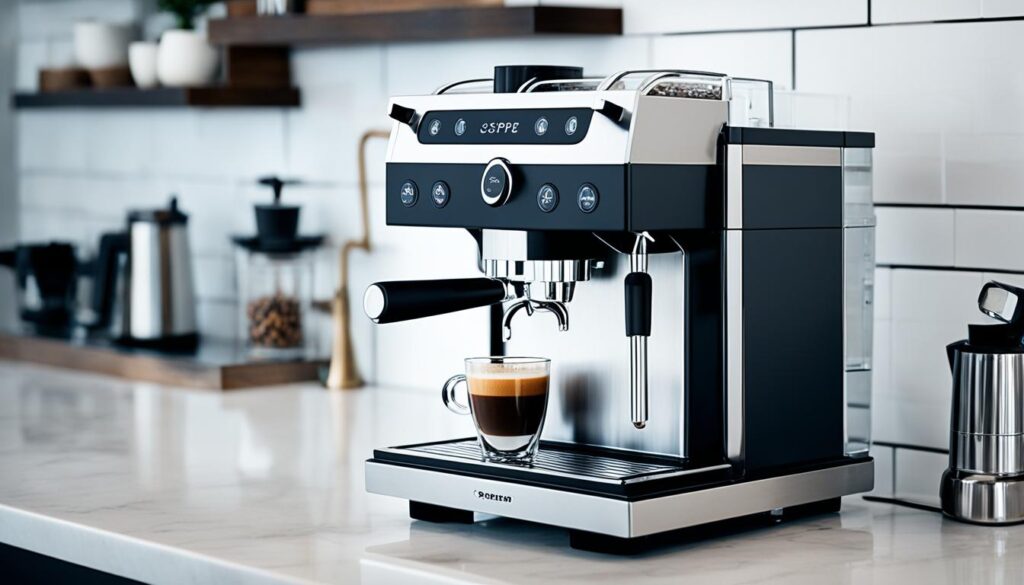
Summary: The Basics of Espresso Brewing
Mastering the basics of espresso brewing is the foundation for creating exceptional home-brewed coffee. By setting up your espresso machine correctly, selecting high-quality coffee beans, grinding and tamping consistently, and using good quality water, you can elevate the flavor and aroma of your espresso. These fundamental steps will help you on your journey to becoming a skilled barista in the comfort of your own home.
| Element | Description |
|---|---|
| Espresso Machine Setup | Warming up the machine, weighing the coffee dose, adjusting the grind size, distributing and tamping the grounds, and pulling the shot within the recommended time frame. |
| Coffee Bean Selection | Choosing freshly roasted beans of different origins and roasts to achieve the desired flavor profile. |
| Grinding and Tamping | Using a quality burr grinder for consistent grind size and tamping the coffee grounds evenly to promote uniform water flow and extraction. |
| Water Quality | Using filtered or bottled water to ensure clean, pure taste and avoiding hard water to prevent machine damage. |
Fine-tuning Your Espresso Brewing
Once you have mastered the basics of espresso brewing, it’s time to take your skills to the next level. Fine-tuning your technique allows you to create espresso shots that perfectly match your preferences. By adjusting shot length, maintaining equipment, using fresh beans, and monitoring the extraction process, you can achieve the ultimate espresso experience.
Experimenting with Shot Length
One of the key factors in fine-tuning your espresso is the shot length. Experimenting with different shot lengths can help you customize the flavor profile of your espresso. A shorter shot will result in a more concentrated and intense flavor, while a longer shot will have a milder taste. By adjusting the shot length, you can discover the perfect balance for your palate.
Taking Care of Your Equipment
Proper maintenance is crucial to ensure the longevity and performance of your espresso equipment. Regular cleaning and descaling will prevent any build-up that could affect the taste of your espresso. Be sure to follow the manufacturer’s instructions for cleaning and maintenance. Additionally, it’s essential to check for any worn-out parts and replace them promptly to avoid any brewing inconsistencies.
Using Fresh Beans
The freshness of your coffee beans greatly impacts the taste of your espresso. Always use freshly roasted beans for the best flavor. Coffee beans start losing their freshness and flavor shortly after being roasted, so it’s recommended to consume them within a few weeks. Investing in a good-quality coffee grinder and grinding the beans just before brewing will further enhance the flavor and aroma of your espresso.
Monitoring the Extraction Process
Monitoring the extraction process is crucial for achieving consistent results. Pay attention to factors such as the brewing temperature, extraction time, and flow rate. Adjusting these variables can help you achieve the desired flavor and ensure a balanced extraction. Using a timer and weighing your espresso shots will provide precise measurements and allow for accurate adjustments.
| Benefits of Fine-tuning Your Espresso Brewing | How to Achieve It |
|---|---|
| Customize the flavor profile | Experiment with shot length |
| Extend the lifespan of your equipment | Maintain and clean your espresso machine regularly |
| Enhance the aroma and taste | Use freshly roasted beans and grind them before brewing |
| Ensure consistent and balanced extractions | Monitor brewing variables and make adjustments as needed |
Through fine-tuning your espresso brewing, you can unlock a world of possibilities and create espresso shots that truly cater to your personal preference. Remember, the journey to perfection is all about experimentation, attention to detail, and a passion for exceptional coffee.
Conclusion
Mastering advanced espresso techniques at home is an exciting journey that can elevate your barista skills and transform your home-brewed coffee experience. By delving into the science and art behind espresso brewing, honing the basics, and fine-tuning your technique, you can unlock the secret to brewing the perfect espresso shot.
With our expert barista advice and professional espresso tips, you’ll gain the knowledge and confidence to create high-quality espressos that rival those of your favorite coffee shops. Remember, it’s not just about the equipment you use—it’s also about the coffee beans you select, the grind size you choose, and the water quality you maintain.
So, embrace the challenge and embark on your journey to become a master at making espresso at home. With passion, practice, and attention to detail, you’ll soon be impressing friends and family with your expertly crafted espressos. Let’s raise our cups to the joy of brewing exceptional home-brewed coffee using advanced espresso techniques!
FAQ
What are the important factors to consider when brewing espresso?
When brewing espresso, it is crucial to pay attention to details such as coffee quality, water temperature, extraction time, pressure, and grind size. These factors can greatly impact the taste and quality of the espresso shot.
How long should an espresso shot be extracted?
An espresso shot should be extracted for around 30 seconds to achieve optimal taste and aroma. This duration allows for the proper extraction of flavors from the coffee grounds.
What is the significance of crema in an espresso shot?
Crema, the layer of foam on top of the coffee, is a sign of a good espresso shot. It indicates the presence of oils and flavors extracted from the coffee. A rich and creamy crema adds to the overall experience and taste of the espresso.
What are the basic steps for brewing espresso at home?
To brew espresso at home, it is important to set up your espresso machine correctly, select the right coffee beans, grind and tamp the coffee properly, and use good quality water. These steps ensure the best flavor and extraction in your espresso.
How can I fine-tune my espresso brewing technique?
Fine-tuning your espresso brewing technique involves experimenting with different shot lengths to adjust the flavor profile, taking care of your equipment for proper function, using fresh coffee beans for optimal freshness and flavor, and monitoring the extraction process to achieve desired results.

